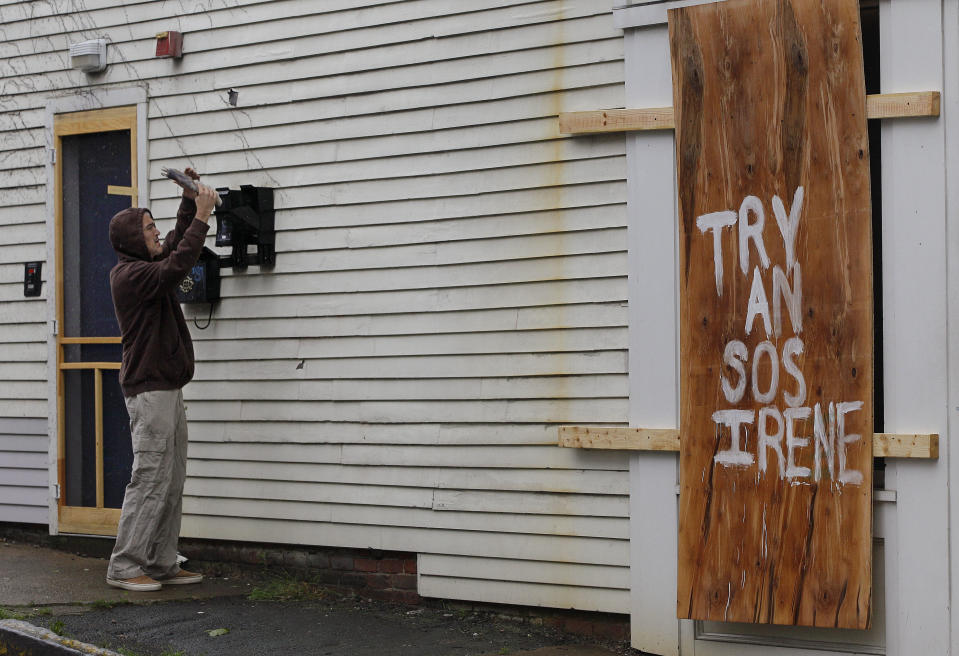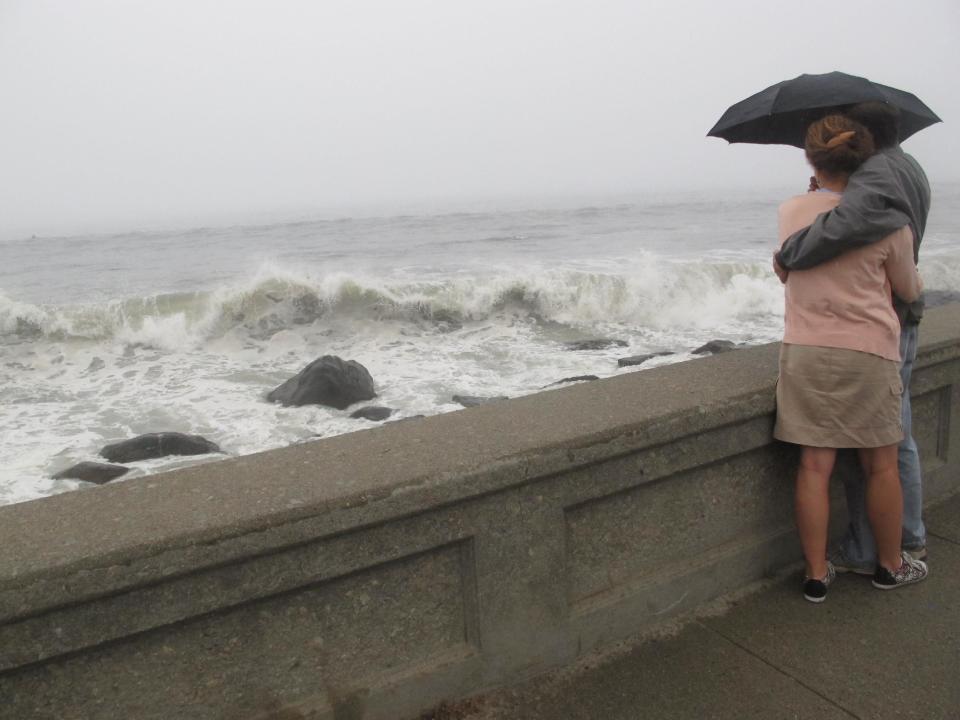A year after Irene, RI utility rate hike is sought
PROVIDENCE, R.I. (AP) — A year after the remnants of Hurricane Irene blew through Rhode Island, the storm that cut power to well over half the state's utility customers has been all but forgotten — though a storm-related rate increase could be on the way.
National Grid asked the Rhode Island Public Utilities Commission in April to approve a rate hike for at least three years, starting in 2013, to help cover a portion of the tens of millions of dollars it spent responding to the storm.
David Graves, a spokesman for the utility, said that at the time Irene hit, there was about $22 million in National Grid's storm fund. It spent about $33 million, leaving a shortfall of about $11 million.
Only part of the shortfall would be made up with a rate increase under National Grid's proposal. The utility wants to reinstate its storm fund collection, for a total of just over $1 million annually, and raise another $2.4 million a year for three years through rate hikes, said Thomas Kogut, a spokesman for the Public Utilities Commission's division of public utilities and carriers.
The rest of the fund deficit would be covered by assigning money already being collected by National Grid for something else.
Consumers would see their bills increase by about 25 cents a month, or $9 over three years, under the proposal, Kogut said.
Henry Shelton, executive director of the George Riley Center, said his group opposes any rate increase.
"We think that the extra money they say it's cost them should come out of the ownership of the company and not from the ratepayers," he said.
The commission will gather testimony and hold public hearings in the fall before making a decision in January.
Rhode Island escaped the worst of Irene, and recovery was relatively swift compared with other states in the region. At the peak of the outages on Aug. 28, the day the storm hit, 344,000 of the state's 480,000 customers were without power. The utility came under strong criticism for its response, and a state Senate committee held hearings.
National Grid said that more than half of those who lost power got it back the next day, while 89 percent had power after four days. The last 50 customers to get power, in the town of Foster, had it restored Sept. 5 — a week and a day later, according to National Grid.
A report prepared for the Public Utilities Commission on National Grid's performance cited multiple problems, including that it was slow to bring in extra crews and assess damage and that its communication of information on outages "was neither timely nor accurate." Overall, the report said, National Grid "lacked the experience and prior scenario planning necessary to respond more effectively."
In response, National Grid said it is taking steps to improve preparedness, including laying the groundwork to tap additional crews from outside the region if needed; improving the way it surveys damage; and more effectively communicating with localities, through the use of community liaisons.
The utility said it was proud of its "restoration successes."
After its hearings, the state Senate panel also called for better communication among the state's emergency management agency, the utility company and local leaders.
___
Associated Press writer Michelle R. Smith contributed to this report.
Erika Niedowski can be reached at http://twitter.com/eniedowski


